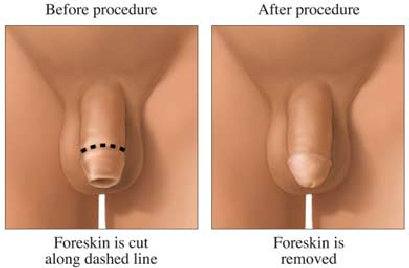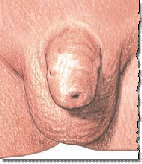






Most patients can return to work within 2 -3 days. Children recover much quicker from the procedure.
The surgical wound heals within 7-10 days. Return to sports can gradually commence from the second or third week after surgery. Adult circumcisions require 4-6 weeks of abstinence from masturbation or intercourse after the surgery to allow for wound healing.

Results of laser circumcision in Singapore are published in the following medical journals:



















At urology centre, circumcision can be performed under local or general anesthesia and can be completed within 15-20 minutes. There
is minimum pain and the procedure is done as day surgery. Patients are discharged with tablet pain-killers and antibiotics for 1-2
days only. We perform circumcision for children of above 2 years old as well as for adult and elderly males.
The excess foreskin is
removed. A couple of stitches a placed to bring the edges of the skin together after removal of the excess skin. These stitches are
self absorbable and do not require removal in a later date.
Circumcision is highly effective in the treatment of early stage balanitis xerotica obliterans involving the foreskin. BXO is a chronic
and progressive inflammatory disorder of the foreskin and may also involve the glans penis and urine tube. Removal of the diseased
foreskin can arrest the progression of this disease.
Phimosis or tight foreskin which prevents complete retraction and exposure of the glans (head) penis will benefit from circumcision.
The tight foreskin harbor bacteria and become infected if not cleaned properly. Forcible retraction of the tight foreskin can be very
uncomfortable and can lead to inflammation. Tight foreskin may also cause discomfort during full erection of the penis.
WHO (World
Health Organization) recommend that circumcision is efficacious for HIV prevention but it does not provide complete protection. Circumcision
provides a 50-60% reduction in HIV transmission from female to male.
Circumcision at a very early age (within first month of life)
confers protection from penile cancer but circumcision at any later age does not seem to confer such protection.

Circumcision for the prevention of urinary tract infection in boys: a systematic review of randomised trials and observational studies.
[Review] [33 refs] Archives of Disease in Childhood. 90(8):853-8, 2005 Aug
To circumcise or not to circumcise: indications, risks,
and alternatives to circumcision in the pediatric population with phimosis. [Review] [62 refs] Urologic Nursing. 26(3):181-94, 2006
Jun.
Male circumcision for prevention of heterosexual acquisition of HIV in men. Cochrane Database Syst Rev. 2003;(3):CD003362
Circumcision
may protect against Genital Wart Virus (HPV). International Journal of Cancer, 2009